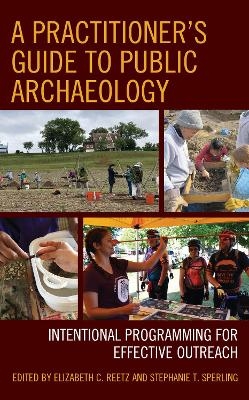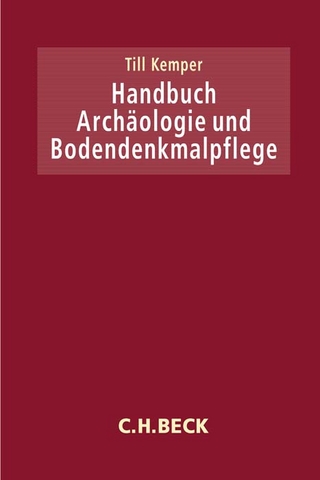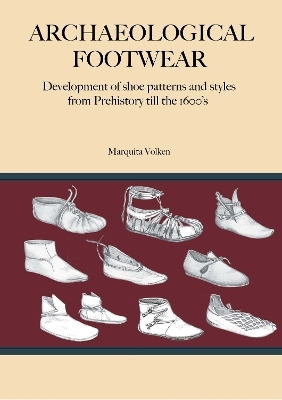
A Practitioner's Guide to Public Archaeology
Rowman & Littlefield (Verlag)
978-1-5381-8081-5 (ISBN)
AQ:
Many archaeologists learn by trial and error while developing public programs and events and are mostly unaware that others in the profession are undergoing the same challenges. Archaeologists seldom receive professional development on K-12 pedagogy, public engagement, program design, or assessment. For many in the field, public outreach is often an under-funded and under-resourced extension of an already overwhelming workload; yet this work is incredibly important.
InA Practitioner's Guide to Public Archaeology: Intentional Programming for Effective Outreach, more than thirty public archaeology practitioners will help you reduce the guesswork and stress behind program planning in this engaging and reader-friendly handbook. A complement to the growing library of public archaeology publications, the authors exclusively focus on key components of planning, implementing, and assessing public archaeology programming. Learn how to connect with your audience; build an accessibility mindset; create intentional goals and outcomes; identify resources, collaborators, and other logistical needs; and conduct assessments to better understand your impact. Discover ideas and techniques for all ages programming, like public excavations, site tours, festivals, and lectures; K-12 presentations and events, including formal and nonformal educational programs that occur inside and outside of a classroom; and community-based heritage management programs that include those designed for recurring participation by active, trained volunteers. Throughout the book, curated case study excerpts provide a diversity of perspectives and offer practical insights. The book concludes with a collection of logistics templates and real-world examples to help you streamline your program preparation.
Drawing from decades of experience, you’ll discover guidance on navigating challenges, celebrating successes, and lessons learned. Whether you are new to public archaeology or a seasoned expert, this book offers valuable insights for all practitioners.
Elizabeth C. Reetz received an MA in Landscape Archaeology from the University of Galway and an M.Ed. in Environmental Education from the University of Minnesota Duluth. As director of strategic initiatives for the University of Iowa Office of the State Archaeologist (OSA), Reetz supervises statewide outreach, engagement, and education initiatives, often in collaboration with Midwest descendant communities and Tribal Nations. She served on the Project Archaeology Leadership Team and as chairperson for the Society for American Archaeology (SAA) Public Education Committee. Her OSA Education and Outreach Program received the 2023 SAA Excellence in Public Programming Award. Stephanie T. Sperling earned a BA in Anthropology from Pennsylvania State University and a Masters of Applied Anthropology from the University of Maryland. Her career has been spent in the Middle Atlantic region, with roles in cultural resource management, non-profits (including the position of director of archaeological research for the Lost Towns Project of Anne Arundel County, Maryland), and local governments, where she served as senior archaeologist for the Department of Parks and Recreation, Prince George’s County, Maryland. Throughout her career, Sperling led community excavations and tours of diverse sites including ancient Indigenous camps, colonial plantations, and twentieth-century segregated beach resorts. She designed countless innovative and collaborative archaeological outreach programs aimed at promoting conversation, stewardship, and preservation.
Acknowledgements
Foreword
Preface
Introduction
Section I: Preparation and Planning for Effective Public Archaeology Programs
Chapter 1: Pedagogy and Educational Best Practices; Nichole A. Tramel and Jeanne M. Moe
Textbox 1.1: Placed-based education in an Indigenous setting: Miskwaabikang (Red Cliff, Wisconsin); Dr. Heather Walder, Marvin DeFoe, Dr. John L. Creese
Chapter 2: Understanding and Connecting with Audiences; Rebecca Simon
Textbox 2.1: Embracing Discomfort; Mia L. Carey
Textbox 2.2: Words Matter; A. Gwynn Henderson and Linda S. Levstik
Chapter 3: Advancing Inclusivity in Archaeology; Amelia S. Dall
Textbox 3.1: A Commitment to Inclusion and Accessibility; Alexandra Jones and Mia L. Carey
Chapter 4: Creating an Intentional Strategy; Angela Labrador, Randi Korn, and Rebecca Dean
Chapter 5: Identifying and Procuring Collaborators and Resources; Bonnie Pitblado and Alexandra Jones
Textbox 5.1: A Journey of Collaboration and Discovery in Maryland Indigenous History; Rico Newman
Chapter 6: Embracing Logistics Planning; Dr. David A. Brown and Thane H. Harpole
Section II: Implementing Public Archaeology Programs and Events
Chapter 7: Fairs,Talks, Tours, and More: All-Ages Programming; Stephanie T. Sperling,
Meredith Anderson Langlitz, and Sara Ayers-Rigsby
Textbox 7.1: The Archaeology Roadshow; Lyssia Merrifield and Virginia L. Butler
Textbox 7.2: Engaging the Public in Research and Education; Constance Arzigian, Daniel Joyce, and Adam Novey
Chapter 8: Engaging with Youth: Classroom Visits and Beyond; Elizabeth C. Reetz
Textbox 8.1: Excavating with Kids: Affordances and Constraints; Jeanne M. Moe
Chapter 9: Community-Based Heritage Management Programs, Samantha R. Rubinson and Sarah E. Miller
Textbox 9.1: We Learn, They Learn: Working Together to Protect Cultural Heritage; Dawn Suzanne (Wanatee) Buffalo and Julie Spotted Eagle Horse Martineau
Textbox 9.2: Citizen Stewardship - Breaking Barriers; Rayette Martin
Textbox 9.3: Heritage Awareness Diving Seminar (HADS); Nicole Bucchino Grinnan
Chapter 10: Navigating the Unexpected; Stephanie T. Sperling and Elizabeth C. Reetz
Textbox 10.1: No Leathers? No Demonstrators!; A. Gwynn Henderson for the Living Archaeology Weekend Steering Committee
Chapter 11: The Effects of COVID-19 on Public Archaeology: A View from Ireland; Denis Shine and Stephan Mandal
Section III: Understanding and Communicating Impact and Success
Chapter 12: Approaches to Assessment and Evaluation; Elizabeth C. Reetz and Rebecca Dean
Textbox 12.1: Making Assessment Quick, Easy, and Effective, Elizabeth Pruitt
Textbox 12.2: Intentionally Assessing Archaeological Career Interest Development among High School Students, Carol E. Colaninno and Susan M. Kooiman
Chapter 13: Building a Research Base; Elizabeth C. Reetz
Textbox 13.1: A Journal Editor’s Perspective; Ryan Wheeler
Section IV: Putting It All Together
Chapter 14: Applying New Knowledge to Organize Public Archaeology Programs and Events; Elizabeth C. Reetz and Stephanie T. Sperling
Appendix A: Audiences and Accessibility
Appendix B: Presentation Slides
Appendix C: Resource Procurement and Budgeting
Appendix D: Legal Considerations
Appendix E: Media Kits
Appendix F: Goals and Outcomes
Appendix G: Program Design
Appendix H: Evaluation and Research Design
| Erscheinungsdatum | 10.08.2024 |
|---|---|
| Verlagsort | Lanham, MD |
| Sprache | englisch |
| Maße | 183 x 261 mm |
| Gewicht | 671 g |
| Themenwelt | Geisteswissenschaften ► Archäologie |
| ISBN-10 | 1-5381-8081-2 / 1538180812 |
| ISBN-13 | 978-1-5381-8081-5 / 9781538180815 |
| Zustand | Neuware |
| Haben Sie eine Frage zum Produkt? |
aus dem Bereich


